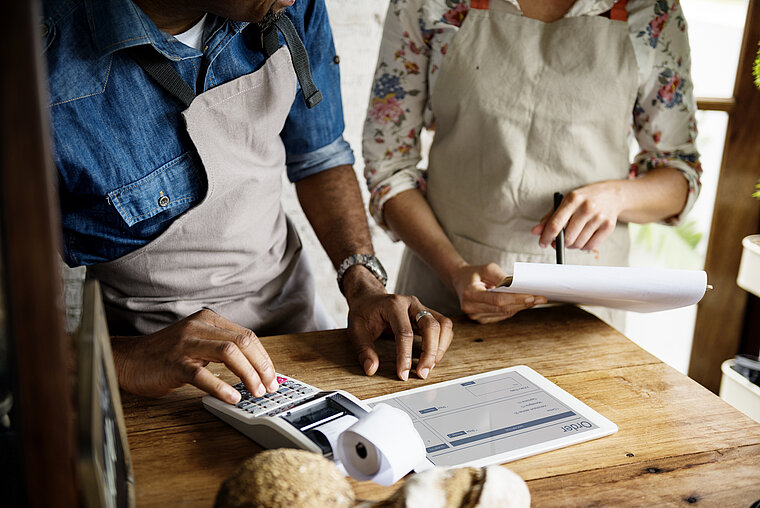How rising food costs impact your cafe or bakery business

You might have to be living under a rock to have avoided hearing anything about the recent rising food costs. Thanks to a variety of factors like Russia’s war on Ukraine and post-pandemic inflation, global prices have been on the rise — and there’s no sign it'll stop just yet.
But what do rising food costs mean for me?
Rising prices globally means that everything is ultimately going to cost more. You’ve probably already noticed this: the amount of money that went into making one cinnamon bun in January this year is probably noticeably different from how much it’s costing you now.
Costs on transport, packaging, and raw ingredients have been on the rise since the pandemic, and the global food crisis spurred on by Russia’s invasion of Ukraine is only prolonging these rising costs.
This also makes it incredibly important for you as a business to ensure that you’re not losing out on sunken costs from food waste at the end of the day. If you’re seeing that you have a large number of unsold croissants at closing, you are now actually losing even more on those croissants than you did in the previous years.
Why should I worry about rising food costs?
All kinds of businesses - bis and small - need to be aware that these are precarious times, and that it’s now more important than ever to keep a keen eye on your margins. Since your overhead (costs) is rising, your profitability is likely going to be more difficult to maintain.
More costs = less profit
Less profit =…we all know what that means!
Larger businesses like Starbucks or Costa Coffee have their own in-house finance and data teams that can help them calculate financial risks to stay afloat in hard times. Smaller businesses don't have these kind of resources.
Numbers? I’m here to maintain my shop and keep my customers happy.
We totally get that. The key is to start incorporating little changes to your routine. Just like going to the gym, the hardest part is getting started (we’re making this comparison from personal experience). For a small business, it’s incredibly important to start making data-driven decisions, rather than going only by gut instinct. We’ll show you how:
Step 1: Get to know your numbers
Get to know the hows, whys, and wheres of your numbers. More often than not, you already have your numbers stored somewhere, whether that’s from your POS system or in your sales log. Identify the costs of your raw materials, get to know your biggest cost-drivers, and understand your best-selling products.
Log these down somewhere, we suggest starting on a digital spreadsheet like Google Sheets or Excel. If you have budget for an accounting tool, we suggest something like Fiken (Norway), Visma (Norway), or Quickbooks. Of course you can also rely on traditional pen-and-paper methods, but it will be more difficult to do future reporting and you’ll likely spend more time sifting through your numbers manually.
Step 2: Understand key financial metrics in your business
Key financial metrics to understand within your business
- Sales
- What are you selling the most? Where are your sales coming from? If you can identify when and why sales are good, you can continue with your current strategy to maintain a higher level of sales and generate more revenue.
- Profit & Loss (P&L)
- This is your company’s income (sales and revenue) minus the expenses during a certain period of time (quarterly, every six months, or yearly). Essentially, revenue minus costs = profit — or loss.
- Cash Flow
- Understand your cash inflow (money coming in) versus your cash outflow (money going out). When your cash inflow exceeds your cash outflow, you’re operating “in black” — meaning you’re generating more profit! Yay!
- Net Income
- Your net income can help indicate whether your business is losing money. Your net income is what is left of your income after you have subtracted all your expenses — including taxes.
- Gross Margin
- This is the money you have leftover after subtracting the costs of the product you’re selling from what you made from the product. So if you sold a croissant for €3, your gross margin for one croissant would be €3 minus the costs of making the croissant.
Still unsure of how to proceed? Try taking a quick online course, listen to some financial podcasts for small businesses, or even subscribe to blogs from companies that provide financial software or tools. These blogs often come packed with great content, including tips on how to maintain a business from a financial perspective.
Step 3: Use your numbers to forecast future numbers
Ever wanted to be able to predict the future?
An easy way to do that is to take your current numbers and historical data, make some basic assumptions about any constants your store will experience, and come up with a forecast for what your future numbers will be like.
The goal of forecasting your sales is not only to have an idea of how much you will sell in the future, but also to be better informed about your current and future decisions. Your sales forecast is also your guide to how much you should really be spending. Aside from that, your sales forecasts can also help inform any potential investors on how well your business is doing.
You can find detailed articles on how to create a sales forecast with a quick Google, but essentially you want to take any costs involved in making a product, multiply that by your estimation of the number of sales you will have, and voilá — you have a forecasted sales number on one product.
Some key tips to remember:
Take into account of inflation rates into your forecasts!
It’s easy to think things look rosy in your forecasts, but remember to include the inflation rate in your costs in your forecasting. In Norway, a reliable source for the current inflation rate is the Consumer Price Index (SSB).
Rising energy prices are key!
Many businesses often forget to factor in rising energy prices in their forecasts. Your forecast will not be very accurate if you leave out a key chunk in your rising costs — energy, or if you assume that your energy costs are constant. Another tip: consider getting a fixed contract if you operate in a country with rapidly-rising energy prices.
Step 4: Automate this process
We know, all of that sounds very overwhelming — and time-consuming. For a small business, especially a bakery or cafe, time is money. Don’t forget to factor in time as a major cost in your operations, too! A good way to reduce time spent on these tasks is to find a way to automate them.
You can find many tools that can help you to do the above tasks automatically, at least partially.
Want a tool that does all of that, and more? Savvie’s all-in-one tool allows small-to-medium sized owners of cafes and bakeries to easily receive sales insight via AI-generated sales forecasts. This means we do all the boring numbers work, and all you need to do is sit back, relax, and bake your goods.
Savvie integrates with many POS systems commonly used in bakeries and cafes, making it an even more seamless experience from logging a sale to receiving your final numbers. You will also receive predictions on what and how much to order (based on your store’s historical data), and be able to track and manage your orders, vendors, and products, as well as food waste from your store. All of this is done by the machine learning algorithm in our app so that you can spend more time doing the things that matter to you, like devising new recipes for that chocolate dessert you want to launch next month.




